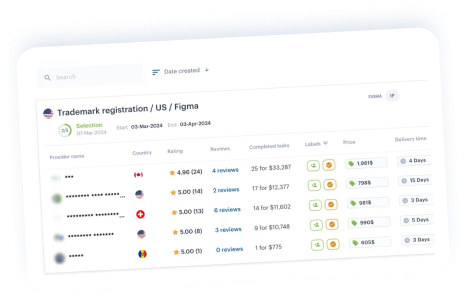In this issue of iPNEWS, we turn to another major update from the United States Patent and Trademark Office (USPTO): the discontinuation of the Accelerated Examination program for utility patents, effective July 10, 2025.
Introduction
To understand how this regulatory change will affect companies seeking faster protection, we consulted Paul G. Johnson, Partner and Patent Attorney at Maschoff Brennan, a professional on the iPNOTE platform who regularly advises innovators on U.S. patent strategy.
Paul shared his expert view on the practical implications of the program’s termination and on how applicants can adjust their filing approaches in light of the shift toward Track One.
Effective July 10, 2025, the USPTO will discontinue petitions under the Accelerated Examination program for utility patents. Applicants seeking faster examination must now rely on Track One.
In the view of Paul G. Johnson, Partner and Patent Attorney at Maschoff Brennan:
How will the process of accelerated patenting in the U.S. change for companies after the cancellation of Accelerated Examination?
This change eliminates the Accelerated Examination option for utility patents by which patenting could be accelerated by satisfying the requirements of the program, including submitting the appropriate petition, conducting a pre-examination search, and providing an accelerated examination support document. Accelerated patenting is still possible under the Track One program.
What are the main advantages and disadvantages of the Track One program compared to the previous option?
The Track One program has a number of advantages relative to Accelerated Examination. First, the Track One program does not require a pre-examination search or an accelerated examination support document, both of which can increase the time and costs associated with the Accelerated Examination option relative to the Track One program and result in admitted prior art even if the USPTO may not have otherwise considered it to be so. In addition, the Track One program permits up to four independent claims and thirty total claims that are not necessarily directed to a single invention. In contrast, the Accelerated Examination program only permitted up to three independent claims and twenty total claims that had to be directed to a single invention (or applicant had to agree to elect a single invention without traverse). The main disadvantage of the Track One program relative to Accelerated Examination is the cost: the USPTO fee for the Track One program is $4515 for a large entity (or $1806 for a small entity or $903 for a micro entity).
Are there risks or “bottlenecks” that companies should be aware of after these changes?
There may be a variety of reasons to accelerate patenting (e.g., short product lifecycles, patent buildup for investment, etc.). In the absence of the Accelerated Examination program, companies need to be aware of typical prosecution timelines (usually a couple years) and consider whether they are acceptable or whether to pursue other options for accelerated patenting.
Which types of companies or industries might be especially affected?
There was a nominal fee for participation in the Accelerated Examination program of $150 for a large entity. This fee was not required if the claimed subject matter was directed to environmental quality, the development or conservation of energy resources, or countering terrorism. This change may be slightly more impactful for companies or industries developing inventions to the foregoing subject matter.
Could you provide a short example of how this change might impact, for instance, BioTech or DeepTech companies?
The change will impact all companies the same: if accelerated patenting is desired, Accelerated Examination is no longer available. Instead, companies will need to consider other options, including the Track One program, petitions to make special based on applicant’s age or health, and the patent prosecution highway (PPH) program if there are foreign counterpart applications that have been allowed or patented.
The shift streamlines procedures but raises costs, especially for startups and SMEs seeking faster protection. For most applicants, Track One remains the most accessible way to obtain expedited examination in the U.S.
Conclusion
The phase-out of Accelerated Examination signals a continued modernization of U.S. patent practice — aligning it with streamlined, data-driven procedures while prioritizing administrative efficiency.
As Paul G. Johnson highlighted, the change simplifies the process but raises costs, especially for startups and SMEs, making Track One the main route for expedited review.
We thank Paul G. Johnson for sharing his insights with iPNEWS and for helping our readers better navigate the evolving landscape of patent acceleration in the United States.






